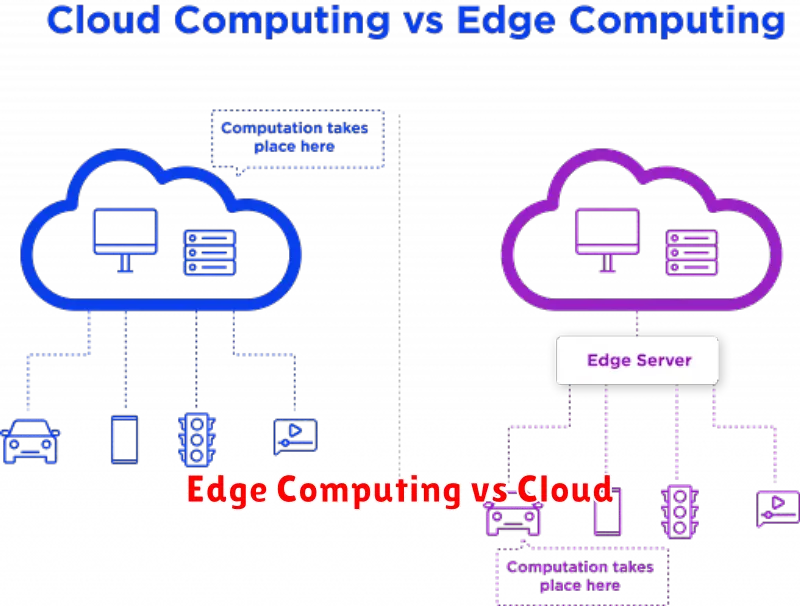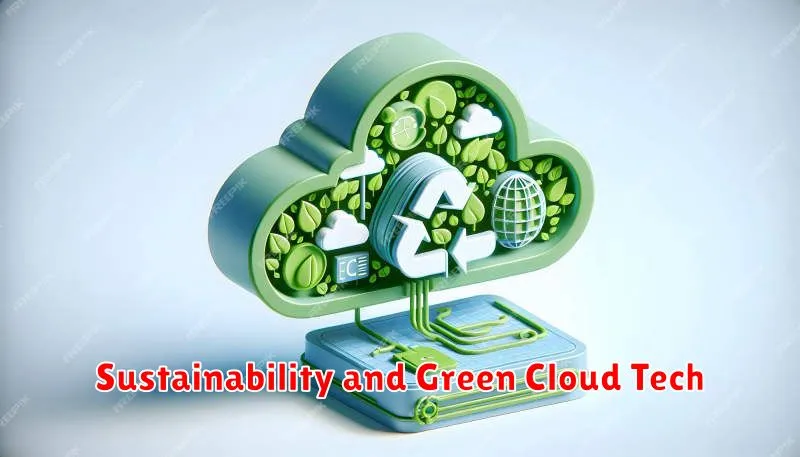The future of cloud computing is rapidly evolving, with new trends and technologies emerging constantly. Understanding these advancements is crucial for businesses and individuals alike to harness the full potential of the cloud. This article explores the key trends shaping the future of cloud computing, providing insights into the transformative changes that will redefine how we store, process, and access data. From serverless computing and edge computing to the growing importance of artificial intelligence and machine learning, we will examine the forces driving innovation in this dynamic landscape. Staying informed about these developments will be essential for making strategic decisions and capitalizing on the opportunities presented by the ever-evolving cloud.
Delving into the specifics, we will analyze the impact of cloud security advancements, the rise of hybrid cloud and multi-cloud strategies, and the increasing focus on sustainability within the cloud computing sector. Furthermore, we will explore the evolving role of quantum computing and its potential to revolutionize cloud capabilities. By examining these future trends, readers will gain valuable perspectives on the trajectory of cloud computing and be better prepared to navigate the complexities and opportunities that lie ahead. This exploration aims to provide a comprehensive overview of what the future holds for cloud computing and its profound impact on the digital world.
Why Cloud Computing Keeps Growing
Cloud computing’s persistent growth is fueled by several key factors. Cost efficiency is a primary driver, as cloud services eliminate the need for substantial upfront investments in hardware and software. Businesses only pay for the resources they consume, reducing capital expenditure and operational costs.
Scalability and flexibility are also significant contributors. Cloud resources can be easily scaled up or down on demand, allowing businesses to adapt quickly to changing market conditions. This agility is crucial in today’s dynamic business environment.
Enhanced security features offered by major cloud providers often surpass what individual companies can afford to implement. This makes the cloud an attractive option for businesses looking to improve their security posture. Furthermore, increased accessibility is another driving force. Cloud services enable employees to access data and applications from anywhere with an internet connection, fostering collaboration and productivity.
The rapid pace of innovation in the cloud space is another crucial aspect. Cloud providers are constantly developing new services and features, offering businesses access to cutting-edge technologies without requiring extensive internal expertise.
AI Integration in Cloud Platforms
A significant trend shaping the future of cloud computing is the increasing integration of artificial intelligence (AI). Cloud platforms are becoming the primary hub for developing, deploying, and managing AI solutions. This is largely due to the scalability and computational power that the cloud offers, which are essential for handling complex AI workloads.
Key benefits of this integration include improved efficiency, enhanced automation, and the ability to extract valuable insights from vast datasets. Cloud providers offer a range of pre-trained AI services, such as machine learning models and natural language processing tools, that businesses can easily incorporate into their applications.
This allows organizations to leverage the power of AI without the need for extensive in-house expertise or significant upfront investment. By utilizing cloud-based AI services, companies can streamline operations, personalize customer experiences, and gain a competitive edge in the market.
Serverless Architecture and Microservices
Serverless architecture represents a significant shift in cloud computing, allowing developers to focus solely on code without managing servers. This model abstracts away the underlying infrastructure, handling scaling, security, and maintenance automatically. Cost-effectiveness is a key driver of serverless adoption, as users only pay for the compute time consumed.
Microservices complement serverless architectures perfectly. Microservices break down applications into small, independent services. This granularity allows for flexible deployments and independent scaling of individual services, maximizing resource utilization. When combined with serverless, each microservice can operate as a standalone function, further optimizing cost and efficiency.
The synergy between serverless and microservices fosters faster development cycles. Teams can work independently on individual services, accelerating feature releases and reducing time to market. This combination also enhances fault isolation. If one microservice fails, the others remain unaffected, increasing overall application resilience.
Edge Computing vs Cloud

While often discussed together, edge computing and cloud computing offer distinct approaches to data processing. Cloud computing centralizes data processing in large data centers, offering scalability and cost-effectiveness for many applications. However, this centralized approach can introduce latency, especially for time-sensitive applications.
Edge computing, on the other hand, processes data closer to the source, at the “edge” of the network. This minimizes latency and bandwidth requirements, making it ideal for applications like IoT devices, autonomous vehicles, and real-time analytics. Edge computing can also enhance data security and privacy by processing sensitive information locally.
The relationship between edge and cloud is often complementary rather than competitive. Edge devices might perform initial processing, filtering data, and then send relevant information to the cloud for further analysis and storage. This hybrid approach leverages the strengths of both paradigms, optimizing performance and cost.
Sustainability and Green Cloud Tech

Sustainability is becoming a crucial factor in cloud computing. The increasing energy consumption of data centers is a growing concern, driving the need for greener solutions. Cloud providers are actively investing in renewable energy sources and developing more energy-efficient infrastructure.
Efforts are underway to optimize data center operations, reduce cooling needs, and improve server utilization. Green cloud technologies aim to minimize the environmental impact of cloud computing. This includes using more efficient hardware, optimizing software, and adopting sustainable practices throughout the data center lifecycle.
Clients are also playing a role by choosing providers committed to sustainability and optimizing their own cloud usage. The future of cloud computing depends on its ability to deliver powerful services while minimizing its environmental footprint. Carbon offsetting and waste reduction initiatives are also becoming increasingly important in the pursuit of a truly sustainable cloud ecosystem.
Multi-Cloud Strategies for Enterprises
Adopting a multi-cloud strategy involves distributing workloads across multiple cloud providers. This approach offers several key advantages, including avoiding vendor lock-in, increasing resilience against outages, and potentially optimizing costs by leveraging different providers’ strengths for specific tasks.
However, managing a multi-cloud environment presents its own set of challenges. Complexity is significantly increased as organizations need to navigate different platforms, tools, and APIs. Maintaining security and compliance across various providers also requires careful planning and execution. Interoperability becomes crucial, ensuring seamless data flow and application functionality between the different cloud environments.
Effective multi-cloud strategies necessitate a well-defined governance model. This includes establishing clear policies for data management, security protocols, and cost control across all cloud platforms. Utilizing cloud management platforms can help streamline operations and provide a centralized view of the entire multi-cloud environment.
What It Means for Developers and Businesses
The evolving cloud landscape presents both opportunities and challenges for developers and businesses. For developers, the rise of serverless computing, AI-powered tools, and advanced cybersecurity measures means a shift in required skill sets. Adaptability and a focus on automation will be crucial. Developers will need to be proficient in managing and deploying applications across diverse cloud environments, leveraging the power of AI and machine learning to optimize performance and security.
Businesses will experience increased agility and cost efficiency. The ability to rapidly scale resources, access cutting-edge technologies, and reduce infrastructure overhead will empower businesses to innovate and compete more effectively. However, businesses also face the challenge of managing increasingly complex cloud environments. Security and compliance will remain paramount, requiring robust strategies and expertise to mitigate risks.
Ultimately, successfully navigating the future of cloud computing requires a proactive approach. Both developers and businesses must embrace continuous learning, invest in the right technologies, and cultivate a culture of innovation to fully realize the potential of the cloud.

